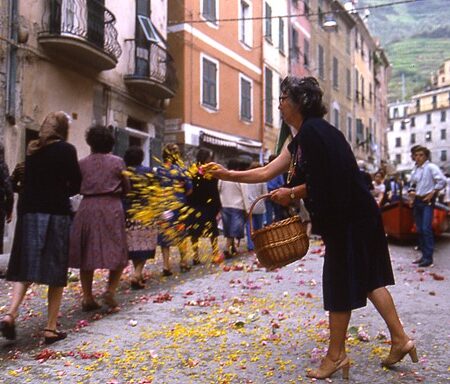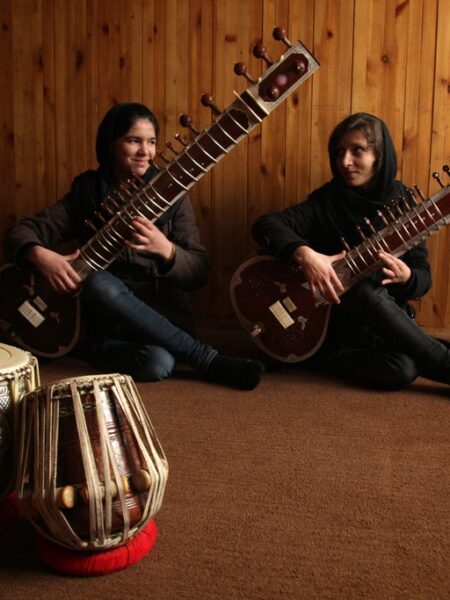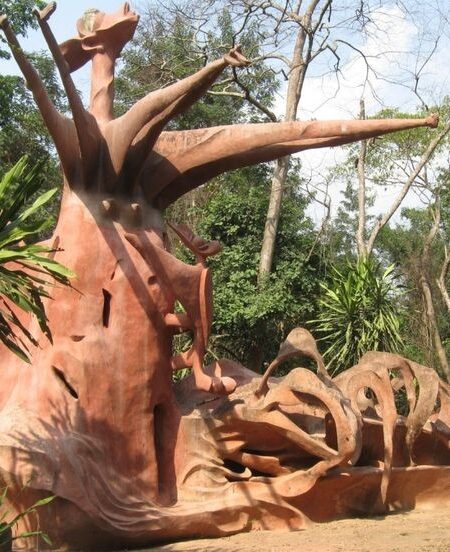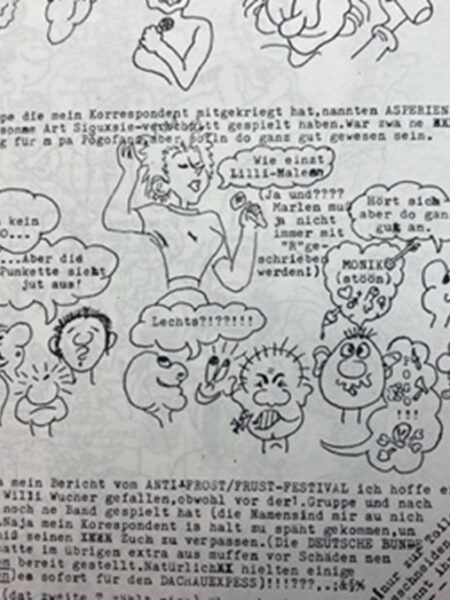Abstract
The practice of witch-hunts in Early Modern Europe was partially guided by the Church and led by the developments of Christian doctrine and the recognition of witchcraft as a heresy and a form of Satanic influence. These doctrinal shifts were evident in the series of witch trials in the 15th century following the Council of Basel. These trials were conducted not only by the secular but also by the ecclesiastical courts. At the same time in distant China, the Emperor Hongwu publicly criticized the “Wuyi”, the witch doctor, and then each emperor inherited his critical attitude towards witch doctors and formulated a series of policies and measures to criticize and sanction witchcraft. The Ming government realized that only by combining the prohibition of witchcraft with the development of medicine, so that people could understand the role of medicine, and realize the fallacy of witch doctors and the harm of witch belief. To this end, most emperors in the Ming Dynasty supported the construction of the Temple of the Medicine Emperor and other places to worship the first doctors. Even though the belief in witchcraft showed similarities in societies throughout the world, the practices were inherited from different historical and cultural contexts. In this paper, the author analyses how different backgrounds and concepts of witchcraft led to different results of witch hunts.
Witchcraft is generally considered a set of magical practices and rituals, mostly symbolic, aimed at positively or negatively influencing people or things belonging to them. These practices are often resorted to with the help of a supernatural being. In this sense, the term is widespread in all cultures (whether primitive or evolved) and has been present in human history since ancient times. In almost every culture people worship the Sun, nature, and reproduction. Since it was often impossible to explain the cause behind the natural phenomena, it was pinned on the ghost, but different worldviews led to different theories.
In the Western context, ancient beliefs and descriptions of magic and witchcraft in Greek and Roman literature had an impact on ideas of witchcraft in modern times and on witch-hunts. As Christianity gained strength, all magic gradually became wicked and demonic. We can notice how witch-figure from Greek to Roman literature were degraded. It is hard to deny that a certain belief’s correctness is a question about power, but Witchcraft is such a complex and multifaceted subject in its manifestations that it cannot be traced back to a single origin. In this essay, I am not talking about folklore, information dissemination, or excessive political factors, but I try to approach witchcraft from a practical and magical perspective. And in the context of Chinese witchcraft, Buddhism is not discussed, as it was imported from India.
When European missionaries came to China for the first time, they could not distinguish the difference between Taoism and folk beliefs, so they had a cognitive prejudice. They regarded all religious phenomena that were not pure Buddhism as remnants of the secularization and degeneration of Laozi and Zhuangzi’s philosophy.
In ancient China, Taoism and witchcraft were homologous. When there was no religion, people collectively referred to all incomprehensible and magical things as “Wu”, witch/witchcraft. “Wu” was not a derogatory term. The early Yellow Emperor was called a “Dawu”, or the great sorcerer, such as Yu the Great in the myth of the Great Flood. They were some people believed to have supernatural powers and practiced by themselves and have never formed any kind of religious organization. The word Witch “Wu” absorbed negative connotations due to two events in Chinese history to “eliminate the chaos and return to normal”.
The first event was recorded in the “Discourses of the States” and the “Book of Documents” during the Zhuanxu Era. It was called “Juedi Tiantong” in history, the “separation of the Heaven from the Earth”. According to the Lu Xing (呂刑) chapter of Shang Shu:
We are told that the Miao (苗)… created oppressive punishments which pushed the people into disorder. Shang Di, the Lord on High… surveyed the people and found them lacking in virtue. Out of pity for those who were innocent, the August Lord (皇帝)… had the Miao exterminated. “Then he charged Chong (重) and Li (黎) to cut the communication between Heaven and Earth so that there would be no descending and ascending.” After this had been done, the order was restored, and the people returned to virtue.
The background of the reform was the social environment where the level of scientific development was relatively undeveloped and the ancestors worshiped ghosts and gods. The response was to abolish folk witchcraft and reorganize sacrificial ceremonies. Many scholars have interpreted these texts as the beginning of social stratification or the promotion of theocracy over the regime, but from a practical point of view, Zhuanxu distinguished the ritual practices that were inherent to his belief of revering Heaven from folk magic.
The second event was promoted by Zhang Daoling, mostly known as the founder and first patriarch of the Tianshidao “Way of the Celestial Masters” sect of Taoism. According to the myth, in the Sichuan area, people were haunted by the demons and he defeated all of the demons in spiritual and physical combat. He also reformed the religious customs of the people by selecting the spells that fit his understanding of Tao to establish Taoism and recognized the other practices as “Wu”. Since then, the word “Wu”, witch, has been associated with the harmful practices. However, unlike the Western cultures that attribute the role of witches mainly to women, in China, it was understood from a practical perspective.
Therefore, we can say that witchcraft and Taoism developed homologously in the early days, so the theory of witchcraft is extended from Chinese thought, which embodies a Chinese cultural understanding of nature, such as yin and yang, five elements and four seasons, etc.
In the folk witchcraft integrated with Buddhism and Taoism, the mantras borrowed and infiltrated each other. Daoist Liu Zhanjiang provided me with some information from a practitioner’s perspective (his Taoist name is Yiye and he has more than ten years of practical experience). “Taoism and witchcraft have the same origin, although Zhang Daoling distinguished Taoism and witchcraft, they continued to infiltrate and learn from each other in the later development process. Taoism still absorbed practices that were inherent to Taoist ideas from the folk. The earliest records of traditional spells, such as “Lei Fa”, Thunder Magic, were circulated among the folk. It prevailed in the Six Dynasties and was incorporated into Taoism in the Song Dynasty. And the element of Taoist inner alchemy can often be seen in witchcraft.
From the point of view of practice, anyone who has magical powers is called a Daoren (Ren means a person, and in Chinese, it is the same word for a Taoist monk). For example, in the miraculous stories such as “You Ming Lu[1]“, it is recorded that in the Six Dynasties of China, wizards were different from Buddhism and Taoism, but they all used the word “Daoren” referring to both wizards and Taoist monks. The key here is “Tao”, that is, magic. Anyone who possesses magic is called a Daoren, so having magic power is not the essential difference between them but is a common feature of them.
However, the people of the time clearly knew that there was a difference between Taoist priests and wizards. For example, it is recorded in Yijian Zhi[2] that a mage surnamed Wang practiced Tianxin Zhengfa[3], dressed like a Taoist priest, and performed Taoist rituals, but he was not a Taoist priest. Because Taoism has a complete set of teachings since its inception, the method he chooses must conform to his teachings. The essence of Taoism lies in the belief in the Tao, which is the absolute existence and the ultimate truth, and its practice is based on achieving the true purpose of being in harmony with the Tao. Therefore, both witchcraft and Taoism have a common external form, which is immortal alchemy, which pursues longevity or mysterious power through external or internal practice methods. Nevertheless, witchcraft practiced in the folk cannot form a very complete or generally recognized belief system and a unified worldview. Thus, it is often scattered, and if a witch doctor travels from his original place of residence to another place, he will often integrate into the local beliefs instead and changing his previous beliefs. Therefore, wizards are not bound by teachings and guidelines. The starting point of wizards’ actions is based on self-interest, such as to win reputation and respect, they can use other people’s lives or property to achieve the purpose of practice (such as harvesting yin to replenish yang[4]).
Therefore, some bloody and cruel processes can be seen in the rituals of wizards. To give a modern example, some blessing ceremonies in Chinese folk temples and Taoist temples today are for blessing in name, but in Taoism we don’t see animals such as pigs, cattle, sheep, and chickens as sacrifices in temples, but when folk mages hold ceremonies, they often kill a chicken as a tribute to their ancestors to start the whole ceremony.


This feature in the Chinese context reflects the different attitudes compared to Western cultures towards witchcraft. Because witchcraft in the West has different origins from the dominant Christianity, there is an exclusion of witchcraft in Christian culture. “The first Christian councils, held in Late Antiquity, merged the Roman with the Biblical traditions and treated sorcery with the same seriousness, due to the different origins of Western witchcraft and dominant Christianity. For instance, Canon 6 of the Council of Elvira (306) refused the Viaticum to those who had killed a man per maleficium (through a deadly magical act), adding that such a crime could not be perpetrated ‘without idolatry’”.[5] Fuelled by political forces, people have a natural fear of wizards.
According to Weber’s theory, Western society, especially represented by the Christian church, is characterized by asceticism, which emphasizes that ethical prophets have the norms of the internal system of religion, control over their members, and a wide range of deterrence. While the dissemination of witchcraft and the disorganization of witches actually broke the norms of these systems, and its mysterious air made witchcraft have a greater deterrent effect than Christianity, and Christianity’s control over members has been questioned. Furthermore, it triggered a strong conflict between the mystery of witchcraft and the spiritual characteristics of Western Christianity.[6] So, the spread of witchcraft causes a kind of value disorder and conflict in individuals, which leads to personal panic. Therefore, the whole of Europe is under the panic of witchcraft, which is very extensive, and even the colonies are affected, including all classes of European society.
The Council of Basel was important as a center for the development and diffusion of the idea of witchcraft in Western Europe. It was concerned with two major problems: the question of papal supremacy and the Hussite heresy. But the persecution of heresy is more to consolidate the power of the Pope.
In China, religion and witchcraft were used by the emperor to serve his own rule. For example, the specific examples listed in the book “Soulstealers: The Chinese Sorcery Scare of 1768” by Philip A. Kuhn were used by the emperor to rectify the entire bureaucracy. As Philip A. Kuhn said, if the monarch wanted to strengthen his interest, there must have been constant recourse to despotic power. In the Ming Dynasty, China at the same time as the council of Basel, because the rulers Ming Taizu Zhu Yuanzhang and Chengzu Zhu Di did not believe in the so-called fairy witchcraft of witch doctors, the witch doctor was suppressed from the very beginning. Until the demise of the Ming Dynasty, each emperor basically inherited the critical attitude towards witch doctors in the early Ming Dynasty and formulated a series of policies and measures to criticize and sanction witch doctors and witchcraft. Vigorously develop medical education and strengthen the popularization of medical knowledge.
We can analyse that in China, due to the fusion of witchcraft and Buddhism, Taoism and Confucianism, the ancient Chinese take a relatively ambiguous attitude towards witchcraft, and only take measures when it really affects the emperor’s decision-making. Unlike Western society, witch hunts are fundamentally different from Chinese witch hunts. China seldom opposes witches because witches affect the power of those in power, but because the mantra used by witches are inherently harmful to people and do not conform to the understanding of the correct way of practice in Chinese culture.
Bibliography
- Montesano, M., 2018. Classical Culture and Witchcraft in Medieval and Renaissance Italy. Basingstoke: Palgrave Macmillan.
- “敬天与崇道— 中古经道教形成的思想史背景” , 刘屹. 2005
“Revering Heaven and Worshipping the Dao: The Intellectual- Historical Background of the Formation of Medieval Canonical Religion Daoism”, Liu Yi.2005
[1] You Ming Lu (幽明录, yōu míng lù)is a collection of tales of the supernatural from early medieval China traditionally attributed to Liu Yiqing
[2] Yijian Zhi is a Chinese zhiguai story collection by Hong Mai of the Southern Song dynasty.
[3] A set of magical practice, is also the name of a sect of Taoism.
[4] A cultivation taking women as the yin, as the cauldron, harvesting the yin to supplement the yang to men.
[5] Montesano, M., 2018. Classical Culture and Witchcraft in Medieval and Renaissance Italy. Basingstoke: Palgrave Macmillan.
[6] www.yjbys.com/bylw/wenhuayishu/111797.html















